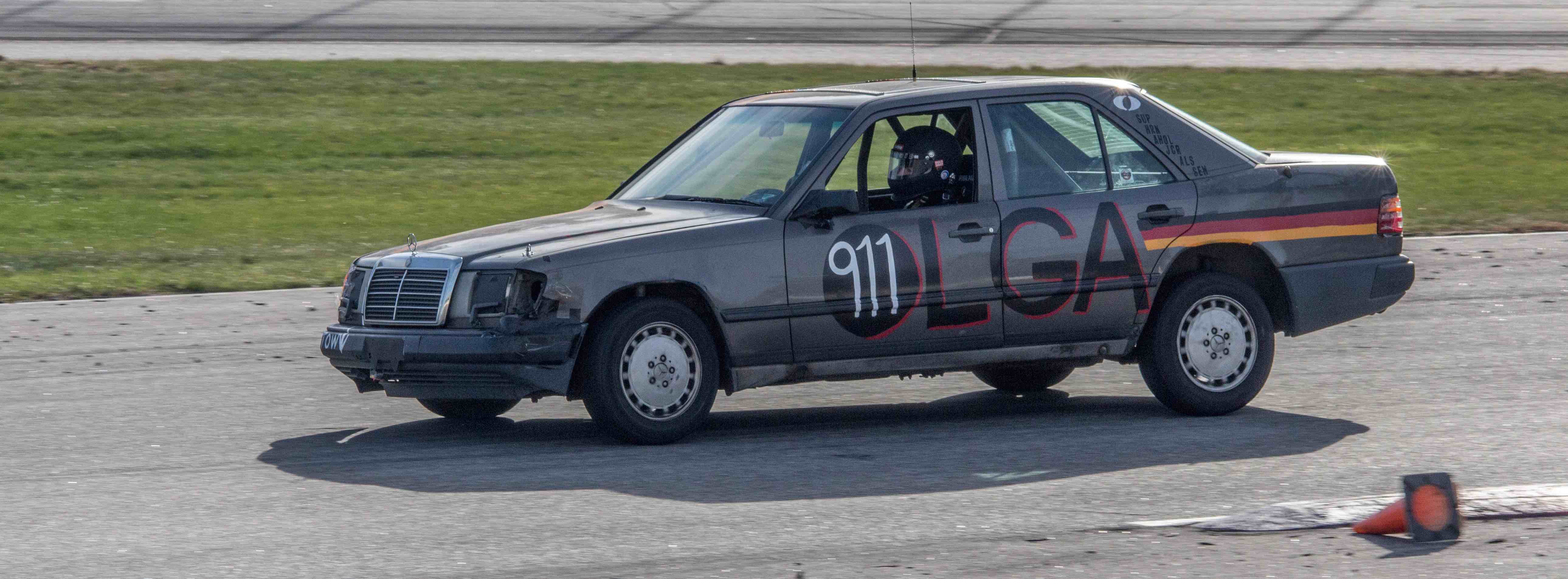24 Hours of Lemons is a racing event for crappy cars. Entrants can only spend up to $500 on the cars they enter and race them on a real race track. At the start of the 2016 school year, myself and 5 friends spontaneously began browsing Craigslist for pieces of junk, bought a $250 1987 Mercedes 300E two days later, and by October 2017 emerged victorious as the winners of the "Index of Effluency," a higher honor and monetary prize than first place itself. We were honored as being most in the spirit of the race and bringing the "best worst car" to compete. This was my favorite passion project at Olin (driving it was possibly the scariest), and I spent countless weekends driving to our teammate's shop in New Hampshire, repairing the car and getting it ready to race. It was an opportunity to understand how cars work and introduced me to the basics of sheet metal fabrication and MIG welding. Below are some of the major milestones in our journey to the racetrack!
A Running Car
When we purchased the Mercedes 300E from its original owner, it was barely running, having been driven with a broken head gasket liner between the engine block and the engine head, with no coolant in the car, and a leaky gas line. Taking the car to our friend's garage, we began to focus on removing the engine head to replace the gasket, which required researching online and learning from other's expiences. I was not incredibly familiar with the inner workings of cars at this point, and learned a lot from following along with others who were more experienced. Lifting the car, we replaced the leaky gas line (dowsing ourselves in gasoline in the process). We also replaced the brake calipers, as the pads were incredibly worn and rusted. With everything replaced, we were successfully able to get the car running! From there, we towed the car to Olin to begin modifications for racing.
Race Preparations
With the car at Olin, we began to focus on making the vehicle race legal. We stripped the entire interior and removed the windows to reduce weight and convert the car to a single seat vehicle. We purchased a bucket seat to install, and I designed and fabricated a sheet metal adapter to fix the seat to the interior mounting points. Our original intent was to maintain the original motor assembly, which would allow the bucket seat to be adjustable for different team members to race more comfortably, but we were unable to replace the broken motors.
With the weather getting colder and Fall 2016 coming to an end, our progress would stall until the following Fall 2017 semester. Registering for the New Hampshire competition in October, we came back together to finish making the car race legal. We designed our roll cage based on the rules, ordered the bent steel tubes, and contracted a friend and professional TIG welder on nuclear submarines to weld our roll cage. Preparing the tubes and the car for welding required a long, meticulous cleaning and notching process, angle grinding away dirt and rust from the surface of the car. I also used the experience as an opportunity to get trained on the MIG welder in Olin's machine shop. With the roll cage installed, our new paint job, and safety equipment in hand, we were ready to race.
The Race
In the 16 hour long race (two 8 hour days) our car was definitively the slowest car. Many teams install super chargers and invest in modifications, exceeding their $500 price limit. Although we were slow, our car proved to be extremely reliable, never breaking down. Despite being an automatic car, we would often stall on the one slight incline in the track. We suffered from two small corner collisions during the race, but still managed to complete 250 laps of the 2 mile long track, landing us in 82nd out of the 120 entrants. We developed a reputation as the slow, reliable car that could, winning our status as the "best worst car" and taking home the grand prize!









